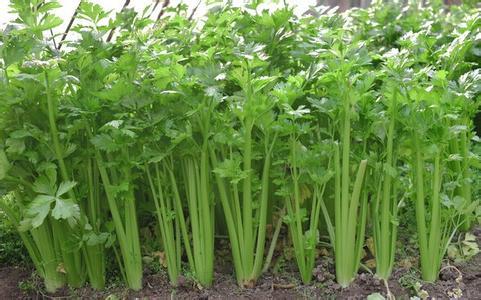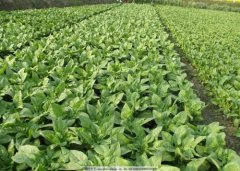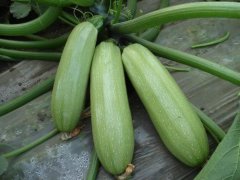Cultivation methods, cultivation and planting techniques of celery
Organic cultivation of celery
Variety
Celery petiole is slender, hollow and fragrant, which can be used for stir-frying, cooking and spices. Varieties can be divided into local species: field tail species (green leaves and white bones), green tube, summer celery; western species (green and yellow). The field tail species has light green petiole, less fiber, more branches, good quality, strong fragrance and non-perishability. Hainan green: summer celery, dark green leaves, thick stalk, crisp quality, slightly heat-resistant without bolting.
Purchase of seeds
Can be purchased in late July
Determine the place
It is more suitable for slightly acidic soil and sand loam or loam with a large amount of humus, and it is better to have good drainage.

Preparation of the field
After soil preparation, base fertilizer was applied and mixed with the field in the middle of July, and the row spacing could be 12*12cm.
Sowing seeds
Sowing in mid and late August, because the plant is small and needs close planting, you can sow it directly in the field and cover it with a layer of soil.
Ploughing, weeding and topdressing
The work of weeding in the middle tillage should be carried out before the weeds are young, and then topdressing can be applied on both sides of the plant with full-ripe compost. Because celery is a shallow root crop, when ploughing and weeding, do not stir the soil too much to avoid damage to the roots and affect its growth.
Harvest
Celery can be harvested 30-50 days after planting. The tender stems and petioles of celery are rich in special flavor and rich in vitamin An and vitamin C. it is a good food to lose weight and lower blood pressure.
Diseases and insect pests
It is easy to have black heart disease due to lack of calcium, or split stem disease due to lack of boron, and there are aphids and night thieves in insect pests, so attention should be paid to its prevention and control work.
- Prev

How to grow lettuce: When to grow lettuce, lettuce cultivation requirements for the environment
Lactuca sativa L. is a very popular vegetable. The cultivars vary in morphology and color. Common cultivars can be divided into leaf, leaf peeling, leaf standing, wrinkled leaf, bulb and tender stem according to morphology. Leaf lettuce, standing lettuce and wrinkled lettuce are also known as non-bearing lettuce
- Next

How to grow watermelon: planting method and planting time of watermelon
Manure management techniques for organic cultivation of small cucurbits Cucurbitaceae Cucurbita sativa L. Small cucumber, also known as cucumber or flower melon, is cultivated in Ilan and Hualien counties.
Related
- A one-day flower show brings 130 million yuan in orders! Nanhai, this Phalaenopsis exhibition is amazing
- What do the flower language and meaning of Lutheran tree mean? Precautions for planting Lutheran tree
- Encounter Chaoshan Kongfu tea, not without this cup of Phoenix single clump
- The durian market in Vietnam and Thailand is flooded. The price of imported durian has plummeted by 30-40% in a month.
- Shanghai solved the problem of local vegetable supply by planting 80,000 mu of green leafy vegetables.
- Wageningen University has become the best agricultural university in the world for the seventh time in a row.
- The strongest export season of South African grapes is full of challenges, with exports to Russia falling sharply by 21%.
- Sri Lanka is on the verge of bankruptcy, "Tea for debt" Organic Agriculture Revolution aggravates the Food crisis?
- Turning waste into earthworm manure and worm manure into organic fertilizer-A new choice for auxiliary farming
- Organic rice growers shoulder the responsibility of nurturing agricultural talents! Yinchuan Sustainable Farm with Organic Life Camp

